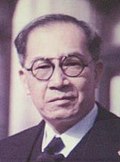| |||||||||||||||||||||||||||||||||||||||||||||
| |||||||||||||||||||||||||||||||||||||||||||||
 | |||||||||||||||||||||||||||||||||||||||||||||
| |||||||||||||||||||||||||||||||||||||||||||||
| |||||||||||||||||||||||||||||||||||||||||||||
| |||||||||||||||||||||||||||||||||||||||||||||
All 100 seats in the House of Representatives of the Philippines 51 seats needed for a majority | |||||||||||||||||||||||||||||||||||||||||||||
|---|---|---|---|---|---|---|---|---|---|---|---|---|---|---|---|---|---|---|---|---|---|---|---|---|---|---|---|---|---|---|---|---|---|---|---|---|---|---|---|---|---|---|---|---|---|
| |||||||||||||||||||||||||||||||||||||||||||||
| |||||||||||||||||||||||||||||||||||||||||||||
Presidential, legislative, and local elections were held on November 8, 1949, in the Philippines. Incumbent President Elpidio Quirino won a full term as President of the Philippines after the death of late President Manuel Roxas in 1948. His running mate, Senator Fernando Lopez won as Vice President. Despite factions created in the administration party, Quirino won a satisfactory vote from the public. It was the only time in Philippine history where the duly elected president, vice president and senators all came from the same party, the Liberal Party.











